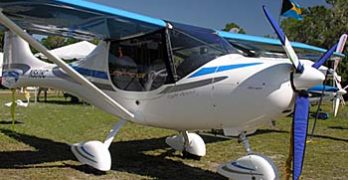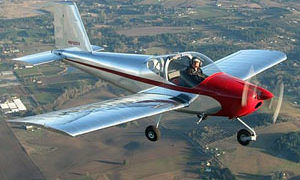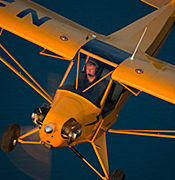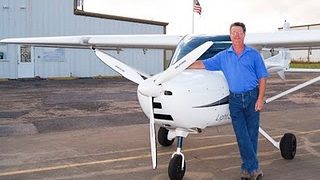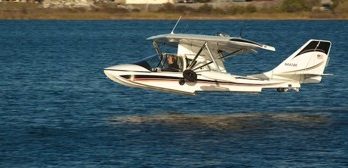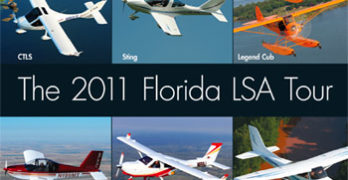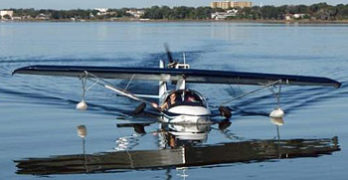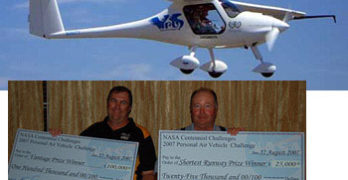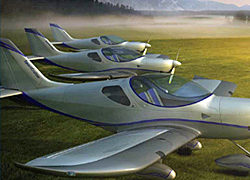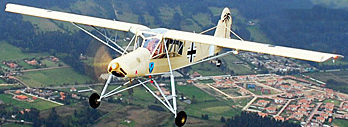One of the early success stories in Light-Sport aviation was the Allegro. The #3 Special LSA to be approved started out so strong that even after three years of no sales following the collapse of the Czech Fantasy Air company, Allegro still holds the #14 spot on the SLSA Market Share chart. When Fantasy Air ceased manufacturing many wrote off the metal wing, composite fuselage LSA. They judged too soon. *** Importers Doug and Betty Hempstead took a hit when Fantasy Air went down, but they picked each other up, dusted themselves off, and set a plan in motion to build the Allegro in America. The first effort went south when a west coast manufacturing facility closed its doors last year. Most folks would’ve given up for good, but Doug and Betty are tenacious aviation entrepreneurs. A few days after Sun ‘n Fun 2011, they went home and anxiously awaited a visit from the North Carolina governor.
Is 2011 the Year of the ELSA?
One of the “diamonds in the rough” of the LSA movement has been the kit LSA or Experimental LSA or simply ELSA. For the first five years of Light-Sport Aircraft, fully manufactured Special Light-Sport Aircraft dominated the sales figures. With very few exceptions, ELSA were nowhere to be found. That’s begun to change, perhaps as voices have been getting louder about the prices of today’s well-equipped and surprisingly capable SLSA. Are ELSA a way to constrain the cost for consumers? Maybe. *** In February EAA reported that worldwide GA aircraft shipments included 889 piston-powered aircraft plus a slightly larger number of business jets and turboprops. Shipments declined 11.4 percent because of the struggling economy. However, EAA said, “Interestingly, homebuilt aircraft registrations continued their growth in the U.S. last year. A total of 941 homebuilt aircraft were added to the FAA registry in 2010, an increase of 10 percent from the previous year.
LSA Before and After Sun ‘n Fun 2011
It’s a great thing when a plan comes together. Consider an extension of the LSA Tour that debuted after Sebring 2011. Then, five or six brands flew around to a half dozen Florida airports and showed their LSA to groups of varying sizes. It was a first attempt, planned rather late without sufficient time to promote. *** The next tour is also working to pull itself together but the group has plans including summer tours, a website and more. The concept definitely works and here’s a fact: Most pilots don’t attend all the airshows. So why not bring the show where the people are? *** The Florida LSA Tour that took place the week after Sebring was principally organized by Bill Canino and Dave Graham. Bill’s early logic was, “We’re in Florida already and we have to fly home through the state after Sebring ends. Since everyone can’t come to Sebring, we thought we’d take the show to them.” *** The idea, involving several competitors working cooperatively, proved to be a success in the way that matters most to sellers and buyers: airplanes sold.
Remos: New Dealer & Boy Scout Pow-Wow
Remos continues to build its U.S. sales/service network. The company just “promoted” Tom Pekar’s Success Aviation, near Houston, from a Pilot Center to it’s 16th Aircraft Dealer in the U.S. *** The new dealer has two Remos GX demos, one with an autopilot. Both are used in the school. *** “Most flight training operations involving the GX use about 3.2 gallons of fuel,” he says, “compared to over 5 in a Cessna 152 and close to 9 in a Skyhawk.” *** With the price of avgas jumping up the way it has been of late, flight schools nationwide have to at least be giving renewed thought to adding LSA trainers to their fleets. *** One of the tangible bonuses the GX brings to its quality build and superb handling characteristics (my personal view: it’s as sweet to fly as any LSA out there) is its capability of flying with the doors off.
Hot Off The Water
To the answer “Progressive Aerodyne!” comes the Jeopardy question, “What LSA company thumbs its nose at the bad economy?” *** Certainly one of the most-fun LSA flights I’ve had in some time came at the controls of that company’s SeaRey amphibian.My LSA pal Dan Johnson recently wrote up a piece on the amphib which spurred me to excerpt some highlights in advance of my own flight report on the lively sea bird coming soon in Plane & Pilot magazine. *** Wayne and Kerry Richter, second and third generation founders of Progressive Aerodyne, started back in the ‘70s with many memorable UL birds they created with dad/grandfather Stanley Richter. The company then was Advanced Aviation and it put out, among other craft, several iterations of a very popular ultralight amphib: the Buccaneer.Building on that success, as Dan notes, Progressive Aerodyne popped out 31 Experimental Amateur Built kits in 2010.
Sebring’s Over… but Next: Florida LSA Tour
Every now and then the marketing geniuses in Light-Sport aviation have an exceptionally good idea. Here’s one of them. Initially organized by SportairUSA’s Bill Canino and now-American Legend marketer Dave Graham (formerly of Gobosh), a flock of planes including five of the most popular brand names will set off for Sebring-After-Sebring… or what they are calling The 2011 Florida LSA Tour. *** “We’re in Florida already and we have to fly home through the state after Sebring ends,” explained Canino. “Since everyone can’t come to Sebring, we thought we’d take the show to them.” *** Bill and Dave established a strategically-planned series of stops, contacted EAA chapters at several locations and asked them for an invitation, and offered them a cash incentive to assist with pulling out the members for the date of arrival. I hope this works well as it’s a grand idea in the LSA tradition of open and friendly competition.
SeaRey Sales Prove Popularity of Amphibians
Progressive Aerodyne and their popular SeaRey amphibian represent a current-day success sufficient to generate envy in most airframe sellers. Consider these results: Searey delivered 31 kits in 2010, an average 2.5 per month during a lousy year. Plus, in just three weeks since Sebring another 14 SeaRey kits have been ordered, upping the monthly average to 4.0. True those SeaReys are Experimental Amateur Built (EAB) kit models and so don’t compare directly with SLSA sales. *** In less than three years, company spokesman and sales director Darrell Lynds (formerly with SportairUSA) took the company from one kit a month to its current pace, along the way building a list of 1,700 very interested potential buyers. He says his 2011 orders are cash-in-hand and projects a solid year for the amphibious seaplane producer. This adds to a remarkably loyal following of 600 SeaRey aircraft builders. How can the central Florida manufacturer be doing so well?
Money from the Sky; Pipistrel Wins Big!
We’ve all heard the line: To make a small fortune in aviation, start with a big one. Yet thanks to Comparative Aircraft Flight Efficiency (CAFE) Foundation and NASA, the laws of gravity seem reversed. A Pipistrel Virus (say: “VeerUs”) went home from the Personal Air Vehicle (PAV) Challenge event with four checks totaling (are you ready for this!?): $160,000. The money represents the biggest share of $250,000 awared for this first year of five contest seasons. Australian pilot and LSA businessman Michael Coates flew a modified version of the Pipistrel Virus owned by Vance Turner (photo, on right) of Rescue, California. Lots more details are available; read the rest of the story. *** Virus, sibling of the motorglider Sinus. (“SeenUs”), took the best overall prize ($100,000); efficiency ($25,000); short runway ($25,000); and second place in the top speed prize ($10,000).
US Sport Aircraft Takes Over from Piper
First off, a correction: Though I took the proposed renaming of PiperSport to “SuperCruiser” directly from a Czech Sport Aircraft (CSA) news release, the new name did not stick. It’ll be the SportCruiser as it was before Piper assumed worldwide distribution. *** Widely reported in aviation media, Piper abruptly ended their almost-year-long relationship with manufacturer CSA in what appears to be a dispute between the two investment companies that own both CSA (Slavia Capital) and Piper (Imprimis). Following Piper’s termination news release, CSA announced that they sought more worldwide sales and felt Piper was too focused on America. *** Whatever the true tale, the popular aircraft will have continued support in the United States thanks to Florida based U.S. Sport Aircraft. USSA was the importer since 2008 and remained involved through the Piper era. Company president Don Ayres stated, “Under the name PiperSport, the SportCruiser was the LSA sales leader in the United States, with a total of 45 units delivered to customers in the last 6 months of 2010.” Don added, “Every PiperSport sold in the US was imported, licensed, registered and sold through US Sport Aircraft and a dealer network, under a distributorship agreement with PiperSport Distribution, Inc.
Two More SLSA Models Appear on Radar
In multiple ways Sebring 2011 is starting off the aviation year in grand fashion.
Crowds are strong through the first three days. The LAMA Dinner with special guest AOPA President
Craig Fuller was a big hit to the standing-room-only crowd. Weather has been warm and accommodating
— though poor conditions to the north prevented several airplanes from arriving on schedule.
*** In my rounds with UltralightNews to shoot more LSA videos, we
uncovered two new Special Light-Sport Aircraft models that were not previously on the
SLSA List. I rushed to add them as I recently found out
another FAA branch regularly uses our SLSA List — I was informed Aircraft
Registration in Oklahoma uses this resource before issuing at least some new registrations
so it’s in a seller’s best interest to be sure their models are on the List.
*** Welcome to SLSA #113, the Cricket Aviation
Storch.
- « Previous Page
- 1
- …
- 29
- 30
- 31
- 32
- 33
- …
- 64
- Next Page »


